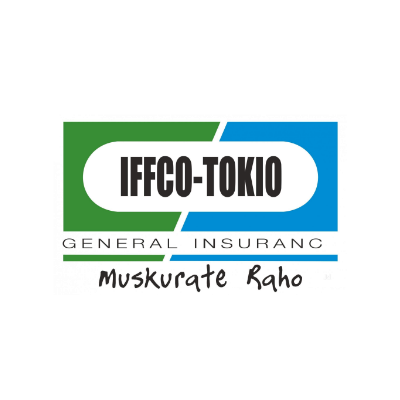UNDERSTANDING FIRE INSURANCE POLICY AND CLAIM PROCESS
Did you know why you need a fire insurance policy? Well, every business and individual should have a fire insurance policy. This fire insurance provides essential coverage for their assets and mitigates the financial impact of fire-related incidents. Let's understand everything about a fire insurance policy, Its features, act, coverages and claim process.
What is Fire Insurance?
Fire Insurance is one type of property insurance. It provides coverage in case of damage or loss caused by a fire. This means that if a property, such as a house, business, or other belongings, is damaged due to a fire, the insurance company will help pay for repairs or replacements.
Fire Insurance Act
The Fire Insurance Act is a set of rules created to protect both insurance companies and their customers. In India, Fire Insurance Act provides guidelines on how fire insurance policies work. It ensures that they are fair and secure in services. These guidelines define the act’s rights and responsibilities of the insurance company and the insurer.
This means that the insurance company must handle claims fairly, and policyholders must provide truthful information about their property and follow policy terms. The Act also helps avoid misunderstandings by clearly outlining the steps for handling fire-related claims and specifying how coverage is determined.
Types of Fire Insurance Policies in India
Fire insurance policies come in various forms, each offering different levels of protection.
-
Specific Policy
This policy provides coverage up to a specific amount. For instance, if you insure your property for 10 lakh rupees and a fire causes damage, you can only claim up to this amount, even if the damage costs more. It’s ideal for people who want a fixed, limited amount of protection.
-
Comprehensive Policy
As the name suggests, this policy covers a wide range of risks beyond just fire, such as damage from floods, storms, theft, or riots. This gives broader protection and is helpful for those who want to secure their property against multiple risks.
-
Floating Policy
This type of policy is useful for businesses with properties or stock in different locations. Instead of buying separate insurance for each location, a floating policy covers all of them under one policy, saving time and cost.
-
Replacement or Reinstatement Policy
This policy focuses on replacing or rebuilding the damaged property instead of just paying its current market value. For example, if your property is destroyed, this policy helps rebuild it rather than just giving a depreciated value. It’s beneficial if you want to ensure your property is returned to its original condition.
-
Valued Policy
In this policy, the property’s value is agreed upon beforehand. If there is a total loss, the policyholder receives the pre-decided amount, regardless of the property’s current market value. This type of policy is chosen when the value of the insured property is unique or difficult to determine.
Features of Fire Insurance
Fire insurance has several defining features that set it apart from other insurance types:
-
Risk Coverage
The main risk covered is fire, but some policies also cover additional risks like lightning, explosions, or natural disasters (if stated in the policy).
-
Compensation for Loss
Fire insurance’s primary goal is to help the policyholder recover financially after fire damage. It pays for repairs, rebuilding, or replacing damaged property.
-
Policy Period
Fire insurance policies usually cover a specific time, often one year. After this period, the policy must be renewed to stay active.
-
Premium
To keep the insurance active, the policyholder pays a set fee known as a premium. This amount is calculated based on the property’s value, risk level, and the coverage required. Higher coverage or risk may result in a higher premium.
-
Exclusions
Certain risks are not covered under fire insurance, such as intentional fire or damage due to war. These exclusions are clearly listed in the policy so the policyholder knows what is not protected.
Principles of Fire Insurance
● Insurable Interest
The policyholder must have a genuine interest in the property being insured, meaning they would face a financial loss if the property were damaged. For instance, a homeowner has an insurable interest in their house, but a stranger does not.
● Utmost Good Faith
Both the policyholder and the insurer must be honest. The policyholder must provide true information about their property and its condition. The insurer, in turn, must be clear about policy terms, coverage, and any exclusions.
● Indemnity
Fire insurance aims to restore the policyholder’s financial position to what it was before the fire. This means the policy does not aim to create a profit but simply covers actual losses.
● Proximate Cause
When a claim is made, it’s important to identify the direct cause of the damage. If the proximate cause is fire or another covered risk, the insurer will cover the loss. This ensures that only relevant risks are compensated.
What is Covered in Fire Insurance
Fire insurance policies cover various types of damages caused by fire and other related events like;
-
Fire Damage
Damage directly caused by fire is covered. This includes damage to buildings, goods, and personal belongings.
-
Lightning and Explosions
Fires caused by lightning strikes or certain types of explosions are often included, offering protection against these natural events.
-
Natural Disasters
Some policies may cover damage from disasters like earthquakes, storms, or floods. It depends on the specific insurance policy terms.
-
Man-Made Events
Certain policies also cover damage from events like riots, strikes, or vandalism, protecting against intentional harm caused by people.
-
Additional Costs
In some cases, the policy may also cover extra expenses, such as hiring temporary housing or firefighting services, making the recovery process smoother.
What is Not Covered in Fire Insurance
Fire insurance policies also have exclusions, meaning certain events are not covered like;
-
Intentional Fire
If a fire is caused deliberately, the insurance company will not cover the damage.
-
Electrical Issues
Fires caused by electrical faults like short circuits may not be covered unless specifically mentioned in the policy.
-
War-Related Damages
Damage due to war, invasion, or civil unrest is generally excluded, as these events are beyond regular risks.
-
Unattended Property
If the property was left vacant for a long time without notifying the insurer, any fire damage may not be covered.
-
Loss of Income
Fire insurance typically covers only property damage and not the loss of business income or earnings caused by the fire.
How Fire Insurance Works/Claiming Process
If a fire occurs then this is how the claim process works
● Step 1: Notify the Insurance Company
The insurer should inform the insurance company immediately. This can be done by calling their helpline, visiting a branch, or using online services if available.
● Step 2: File a Claim
The policyholder needs to fill out a claim form, providing details about the incident, the extent of damage, and an estimate of the loss. This is an official request for compensation.
● Step 3: Document the Damage
It’s important to gather evidence of the damage. Photos, videos, and receipts of the damaged property can be helpful and serve as proof for the insurance company.
● Step 4: Survey and Assessment
The insurance company will send a surveyor to inspect the damage. The surveyor will assess the loss and may ask questions to verify the claim’s validity.
● Step 5: Claim Settlement
After reviewing all details, the insurance company will determine the compensation amount. Once approved, the insurance company will release payment to the policyholder to cover repair or replacement costs.
Over to you,
Fire insurance is a significant protection for any property owner. As it offers financial security against unexpected fire damage. In regions prone to fire risks, having a well-structured fire insurance policy helps property owners manage losses and recover more smoothly. With the right coverage in place, you can rest assured that your property is safeguarded, allowing you to focus on a faster return to normalcy.
Take a step towards safeguarding your property by exploring fire insurance options today. The right coverage can make all the difference in uncertain times.
FAQs
Q1. What types of properties are covered under fire insurance?
Ans: Fire insurance generally covers homes, commercial buildings, and some industrial properties, along with contents like furniture and equipment.
Q2. Can I extend my fire insurance policy to cover additional risks?
Ans: Yes, you can add coverage for risks like natural disasters, theft, or riots. Check with your insurer for options.
Q3. How is the premium for fire insurance calculated?
Ans: Premiums depend on property value, location, fire risk, and coverage type. High-risk areas or higher-value properties usually have higher premiums.
Q4. What should I do if my fire insurance claim is rejected?
Ans: Review the rejection details, provide any missing info, and contact your insurer. If needed, you can appeal or seek help from an insurance ombudsman.
Q5. Does fire insurance cover loss of income for businesses?
Ans: Standard fire insurance doesn’t cover income loss, but you can add business interruption insurance for that protection.
Published on - 10/10/2025




























